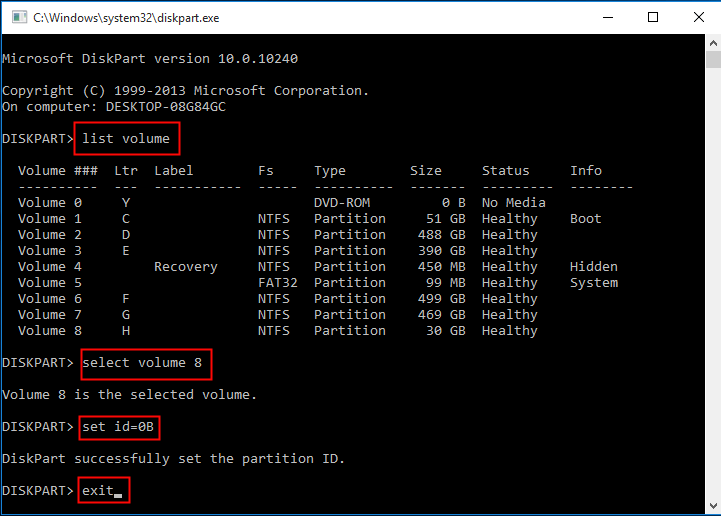[Easy to Go] How to Change Partition Type ID in Windows 10/8/7 Computer and Laptop
On this page, you're going to learn how to change or set a Partition Type ID in Windows 10/8/7 computer and laptop using the DiskPart command. To be able to change the Partition Type ID on a dynamic disk, you must convert a dynamic disk to basic to proceed. In this case, Qiling Partition Master is your top choice. Read through the page so you can get everything about a partition type ID you want to know.
What's A Partition Type ID?
Is the term "Partition Type" familiar to you? What is the "Partition Type ID" then? First of all, there are altogether five types of partitions: [1] primary, [2] extensible firmware interface (EFI), [3] extended, [4] logical, and [5] Microsoft Reserved (MSR). And, Partition type ID is a byte value intended to specify the file system a partition contains and/or to flag the special access method used to access the partition. To put it simply, Partition Type ID is usually applied to mark that which operating system can identify and use the partition, and a part of it records attributes of file system types.
Will you be interested in related articles of these →
If you're interested, the following are some frequently used Partition Type IDs for both MBR and GPT partitions. To know the value for the type field will help you set the Partition Type ID with a clear mind.
For MBR based partitions, the value for the type field is in hexadecimal form like these:
- 0x01 FAT12
- 0x04 FAT16, less than 32 MB
- 0x06 FAT16, greater than 32 MB
- 0x07 NTFS
- 0x0B FAT32, used by DOS & Win95
- 0x0C FAT32 using LBA mode to access to FAT32 partition
- 0x0E FAT16 using LBA mode to access to FAT16 partition
While for GPT based partitions, the value for the type field is a long string like these:
- EFI system partition: c12a7328-f81f-11d2-ba4b-00a0c93ec93b
- Basic data partition: ebd0a0a2-b9e5-4433-87c0-68b6b72699c7
- ...
How to Change Partition Type ID in Windows 10/8/7?
Windows DiskPart command is the universally applied method to manage a Partition Type ID. You must be careful with the commands because risks are there, wrong operation on a disk drive will cause your computer to fail or be unable to boot.
* The command doesn't work on dynamic disks or on Microsoft Reserved partitions. You must use the final method to convert dynamic to basic to be able to use DiskPart here.
Step 1. Press Windows + R keys to open the Run dialogue. Type diskpart and hit Enter to run Diskpart.
Step 2. Type list volume and press Enter.
Step 3. Type select volume # (ex: volume 8) and press Enter to select the volume/partition of which you want to change partition type ID.
Step 4. Type set id=# (ex: id=0B) and press Enter to set a new partition type ID.
(Tips: The leading "0x" of the ID is omitted when specifying the hexadecimal partition type.)
Step 5. Type exit and press Enter to exit Diskpart.

How to Change Dynamic to Basic to Be Able to Change Partition Type ID?
Qiling Partition Master is for Windows users. It's a comprehensive disk & partition management tool that everyone should have on a PC. If your hard drive is currently running as a dynamic disk, you cannot use the DiskPart way to set a new partition id. But you can simply change the partition type from dynamic disk to basic disk with ease using Qiling partition magic software like this:
Step 1. Install and open Qiling Partition Master on your Windows computer.
Step 2. Select the disk that you want to convert, tight-click it and choose the conversion option:
- Basic to Dynamic: right-click a basic disk and select "Convert to Dynamic".
- Dynamic to Basic: right-click a dynamic disk and select "Convert to Basic".
Related Articles
- Extend C Drive or Increase Partition Size on Windows Server 2008
- (FULL FIX 2022) We Couldn't Create a New Partition or Locate an Existing One
- How to Solve Windows 11 Update Not Enough Space (5 Ways)
- How to Fix Extend Volume Greyed Out in Windows 11?